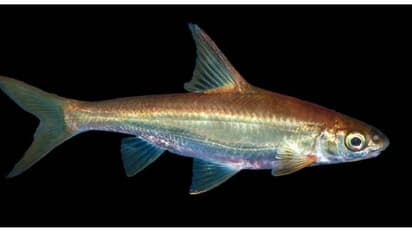Kerala: First aquatic faunal survey in Periyar Tiger Reserve unveiled exceptional odonate and fish diversity

Synopsis
The first-ever comprehensive aquatic multi-taxa survey in Periyar Tiger Reserve (PTR) involved approximately 75 experts from southern India and members of the Fishermen Eco Development Committee. Notably, the survey recorded four alien/exotic fish species and potentially discovered at least seven new fish species, pending confirmation through molecular studies.
Approximately 75 experts from southern India, along with members of the Fishermen Eco Development Committee of Periyar Tiger Reserve, participated in the first-ever aquatic multi-taxa survey in Periyar Tiger Reserve (PTR) from May 16th to 19th, 2024. The delegates assessed the aquatic faunal diversity from 21 base camps spread across various habitats and elevations within PTR, including the streams of the Periyar, Mullayar, and Pampa basins, as well as Periyar Lake.
According to a press release, "Fifty-six species of fish were recorded which makes it the highest count ever from any study in the PTR conducted since the 1940s’. The number of fish species inside the various water bodies of PTR comprises close to 30% of all fish species known from Kerala. The significance of PTR’s fish diversity is in its micro-endemism as it harbours nine species restricted to the boundaries of the reserve – all of which but one, could be recorded during the current survey."
The survey also identified four alien/exotic fish species: Clarias gariepinus (African Catfish), Cyprinus carpio (Common Carp), Oreochromis mossambicus (Mozambique Tilapia), and Oreochromis niloticus (Nile Tilapia). Highlights of the study included the potential discovery of at least seven new fish species from various tributaries within PTR, pending confirmation through molecular studies. The highest diversity of fish was observed in the Mlappara section of the Periyar tributary, followed by the Randattinkara section of the Mullayar tributary, and the Moozhikal section of the Pampa River.
The release further stated, "As part of the odonate survey in the region, four new species were added to the faunal checklist of PTR, taking the tally of odonate species in the reserve to 120 species. This is the highest number of odonates ever recorded in any protected area in Kerala, and comprises 63% of the odonate diversity of Kerala and around 55% of Western Ghats. The four new additions are Anaciaeschna martini Selys, 1897, Brachydiplax sobrina (Rambur,1842), Idionyx corona Fraser, 1921, and Idionyx minima Fraser, 1931. The odonate diversity was maximum in the Gavi-Anathode stretch followed by the Vellimala-Thamara region. Western Ghat Endemic species like Euphaea cardinalis (Fraser, 1924), Merogomphus tamaracherriensis Fraser, 1931, Esme mudiensis Fraser, 1931, Protosticta gravelyi Laidlaw, 1915 and Protosticta sholai Subramanian & Babu 2020 were also recorded."
The presence of micro-endemic fish species signifies the success of PTR's management interventions in controlling invasive species. This indicates a healthy aquatic ecosystem where native species can thrive. Immediate further studies are planned to describe the newly encountered species.
Dr. Patil Suyog Subhash Rao IFS (Deputy Director, East Division, PTR) stressed on the significance of the data generated from such composite assessments for the long-term management and conservation of the region”.
“A follow-up survey including major terrestrial and aquatic fauna is under consideration in the inter-monsoon period” he added.
Stay updated with the Breaking News Today and Latest News from across India and around the world. Get real-time updates, in-depth analysis, and comprehensive coverage of India News, World News, Indian Defence News, Kerala News, and Karnataka News. From politics to current affairs, follow every major story as it unfolds. Download the Asianet News Official App to stay informed anytime, anywhere.